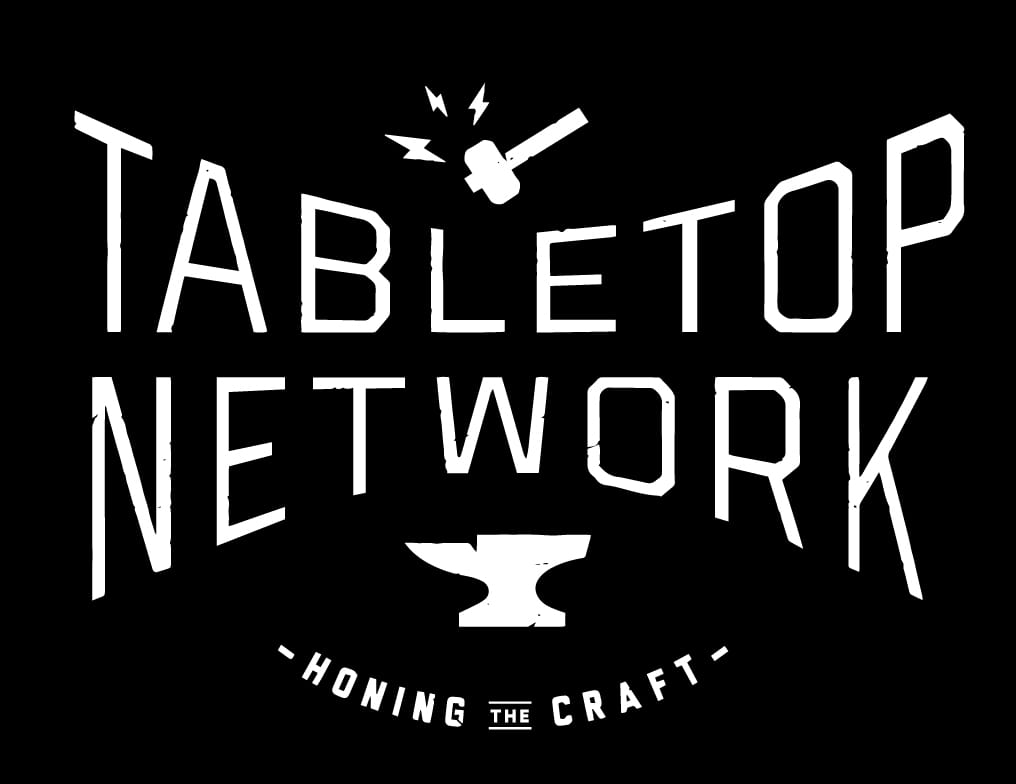
In this three part series, read about the League’s secret mission in coordination with Stonemaier Games to select the top 10 games every designer should play at least once!
—
KEY LINKS
Part I, Jamey Stegmaier introduced the challenge, and we our methods.
Games Designers Play – James Mathe polled designers from top BGG choices.
Top 10 List on BGG – open voting, add games and thumb up your top 10.
CRITERIA
During our discussions on Trello, Mark and Christina Major came up with a stellar list of criteria on selecting games that I wanted to highlight here. Not everyone used these guidelines or felt a part of creating them due to the late stage in the game when they were introduced, but I think they are very useful for considering game lessons.
OVERALL LIST CRITERIA
These criteria should be considered for every game, with the view of the list as a whole.
BROAD AND INCLUSIVE
The list needs to have a wide variety of lessons about game design. We should attempt not to focus too much on any one idea, and pay attention to any potential blind spots we have due to our own collective preferences.
TEACH LESSONS IN 30 MINUTES OR LESS
Each game doesn’t have to be short, but the primary lessons we want designers to get should be encountered within the first half hour of gameplay. If the interesting part of the game only shows up during end-game scoring, for example, it probably shouldn’t be on the list.
FOCUSED LESSONS
When playing each game, designers shouldn’t have to hunt for what part of the game is valuable. Likewise, designers shouldn’t have to sift through a dozen different gameplay concepts in a game to figure out which ones they should pay attention to for their own design goals.
POSITIVE LESSONS
Playing any game on the list should prompt designers to think constructively about game design. We should avoid populating the list with “this is what not to do” examples.
—
CRITERIA FOR INDIVIDUAL GAMES
A game should be suggested if it works well for any of these criteria, though generally the more criteria it works for, the better. Some criteria are better than others, and we may have to have some not represented since we only have 10 games to represent them with.
PROMPTS THOUGHT ABOUT CORE ASPECTS OF GAME DESIGN
This is kind of a meta-criteria, and can be redundant, but some games are built to directly play with our understanding of games and how they work. A catch-all for games that we’re really not sure how to categorize otherwise.
CREATES A PARTICULAR EXPERIENCE
This is a particularly strong criteria if the experiences are crafted in a subtle or non-obvious way, given a description of the mechanics.
GOOD BALANCE (SYMMETRIC OR ASYMMETRIC)
This does not have to be “player vs player” balance. This could also include a good balance in a player’s choice between various paths.
RULES CLARITY / FOCUS / SIMPLICITY
Simpler rules work well for the “Focused Lessons” goal, but even more complicated rules might work here if they are intuitive and easy to understand.
REPLAYABILITY (VARIABILITY, DEPTH)
A game with strong replayability makes a designer want to explore the game’s potential, though the potential needs to be apparent from a single session.
THEME & STORY (STRONG CONTEXT)
A game with strong context does a good job integrating the theme and the mechanics, creating a game that is immersive with intuitive player choices.
SYSTEMS, MATH, & PROBABILITY
An easily overlooked criteria, any designer’s toolbox should include experience with a game that does interesting things with the math and logic of how its parts move.
PLAYER ENGAGEMENT
Strong player engagement can be achieved a number of different ways, but it’s always valuable to make sure players are happy paying attention to the game uninterrupted through the entire session.
COMPONENTS
Some games are notable for having atypical game components. Though we should avoid including games for the sake of novelty, it can be good to have examples of games using a unique outside-the-box idea to the fullest extent.
INFLUENCE ON OTHER GAMES
It is good to be educated about where particular game design ideas came from. A weak criteria, but if an idea is really pervasive it is worth including. Also, it might be easier to meet the “Focused Lessons” goal with the original example.
EXEMPLAR OF GENRE/MECHANIC
While this is a good criteria for “advanced” lessons, it should be a low priority criteria for a top 10 list. There are a LOT of genres and mechanics, and fitting all notable genres and mechanics into 10 games is unlikely.
Here is a short list of genres and mechanics, some of which we’ve already suggested games based on:
- Economy
- Time Based
- Social Deduction
- In-Game Deck Building
- Worker Placement
- Drafting
- Bidding
- RPG
- Card Battle (CCG/LCG)
- Party Game
- Abstract Strategy
- Wargame/Tactics
- Card Game
- Tile Placement (Map Building)
- Press-Your-Luck
- Area Control
We might discuss some of these if we think they are important enough for game design as a whole to prioritize in the list.
MECHANICS SOUP
Also a relatively weak criteria. A game that works for Mechanics Soup could help us showcase several mechanics in one game, but it also goes in the opposite direction of the “Focused Lessons” goal.
—
DESIGNER TOP 15 LISTS
It’s been said that the sum of the parts is more than the sum of the whole, and it’s no less true when you ask 12 different designers and teams to pick their own lists. Yes, we’re happy to have come up with a single, final list, but we each took time and care to make our own picks, and it would seem a shame not to share them to give the big picture.
I struggled with how to present 12 designer lists without it being a wall of text. I settled on a tab system, which was an easy enough WordPress thing to do. You can click through as many of these as you like, if you are curious to see what we nominated.
Note: reasons were listed as fragments and are short “twitter” length on purpose for Jamey to combine a few together on reference sheets.
BRAD BROOKS NOMINATES:
Top 10 Games
15pts – Love Letter – quick but interesting deduction game with minimal components of 16 cards.
14pts – Dominion – you can easily see how all the parts move in this, the original deck-building game.
13pts – King of Tokyo – on-your-feet player interactivity achieved with awesome monster theme on top of yahtzee-like dice mechanic
12pts – 7 Wonders – simultaneous card drafting civ building game in which innovative neighbor mechanic makes it play the same with 3 -7 players
11pts – Pandemic – cooperative game where the threat compounds via the “Epidemic: Intensify” mechanic in which infected locations keep returning
10pts – Coup – well crafted minimalist bluffing and deduction game
9pts – For Sale – two stage auction game with simple rules that can be explained as you go
8pts – Dixit – a casual party game where you must thread the needle between
obvious and obscure with the clues you give
7pts – The Resistance – see how to balance information exposure in this two team deduction and bluffing game
6pts – Machi Koro – simple city-building game based around dice probabilities with lots of player interaction
Honorable Mentions
5pts – Mice & Mystics – storytelling, role-playing adventure game with good theme integration
4pts – 1812: The Invasion of Canada – light wargame with unique
asymmetric, 2 team, 5 player system
3pts – Vegas Showdown – a deft blend of bidding, tile laying and resource management that works with its theme
2pts – Walnut Grove – worker placement and tile laying mechanics distilled down to a short, engaging play time
1pt – Catacombs – a finger-flicking wizards & warriors dexterity adventure game
CHRISTINA MAJOR NOMINATES:
My focus is on category balance. Everything is pretty quick to pick up and a good introduction to a different genre.
Top 10 Games
15pts – Hanabi – Innovative use of backward card mechanic and limited information-based deduction/cooperative decision-making
14pts – Zendo – Meta-primer on how players perceive rules and complexity
13pts – Love Letter – Simple primer on micro games
12pts – The Resistance – Simple primer on social deduction games
11pts – Forbidden Desert – Simple primer on cooperatives, strong escalation of consequences mechanics
10pts – T’zolkin: The Mayan Calendar – Component-driven mechanics
9pts – FATE – Simple primer on roleplaying games
8pts – Wizard – Simple primer on trick-taking card games, speculation, press your luck
7pts – Stone Age – Simple primer on worker placement
6pts – 7 Wonders – Simple primer on card drafting
Honorable Mentions
5pts – Galaxy Trucker – Simple primer on speed-based games
4pts – Puerto Rico – Simple primer on role selection
3pts – Kingsburg – Simple dice-rolling/strategy game; press your luck aspect and planning for future and prioritization.
2pts – Dominion – Simple primer on deckbuilding, replayability through randomization of card decks
1pt – Carcassonne – Simple primer on tile-laying games, demonstrates map building in quick way.
(Note: FATE may benefit from premade characters for the purposes of the lesson.)
CHRISTIAN STRAIN NOMINATES:
Top 10 Games
15pts – 7 Wonders – A new designer would learn a great deal about iconography, set collection, and card drafting
14pts – Lords of Waterdeep – The designer would learn basic worker-placement mechanics, along with how to integrate a very rich theme into a euro-style mechanic
13pts – Cyclades – Bidding for actions, strategic gameplay, area control, and funds management make Cyclades a game full of mechanics that work together naturally
12pts – Dominion – The quintessential card drafting and engine building game
11pts – Splendor – The cleanest example of engine building
10pts – Cosmic Encounter – Negotiation is the most obvious thing to get from this game, but also how to keep everyone engaged while it’s other people’s turns
9pts – Pandemic – This is a cooperative game that requires absolute teamwork for survival.
8pts – Tales of the Arabian Nights – Storytelling at its finest..
7pts – Betrayal at House on the Hill – The new designer should see how the players have variable abilities, exploration on a modular board, and different scenario setups for the end game
6pts – Space Cadets: Dice Duel – The designer would see a real-time game play, team versus team, and combat strategy in this game
Honorable Mentions
5pts – Dixit – A great game that showcases voting and a unique way of interacting with other player’s perceptions
4pts – King of Tokyo – The designer would learn about player elimination, highly random results, and variable player powers and how they work together if the game is fast paced and quick
3pts – Merchant of Venus – The pick-up-and-deliver mechanic along with exploration and complex navigation make Merchants of Venus a great pick for a new designer
2pts – The Resistance – A designer would experience voting, the traitor mechanic, and bluffing.
1pt – Caverna: The Cave Farmers – A very heavy worker-placement Euro with very little random and a great deal of choices for the players.
KELSEY AND MICHAEL DOMENY NOMINATE:
Top 10 Games
15pts – Love Letter – Create intrigue with only 16 cards, each with only a number and a sentence
14pts – Ladies & Gentlemen – integration of two different games/mechanics into one objective
13pts – Forbidden Desert – Team success depends on interacting with the mechanics through the mindset of the theme
12pts – Small World – Scale-ability, replayability
11pts – Mascarade – intrigue, bluffing. no player elimination
10pts – Wits and Wagers – unique trivia mechanic to involve all skill levels
9pts – Diplomacy – A game that pits players with and against each other without the need of elements of chance
8pts – Acquire – realistic economy
7pts – King of Tokyo – theme for young players, strategy appropriate for all players
6pts – SET – infinitely scale-able, “observation game”
Honorable Mentions
5pts – The Castles of Burgundy – euro game
4pts – Dominion – Defines the deck-building mechanic, and is a must-see for learning the fundamentals
3pts – Hanabi – Unlike most cooperative games, Hanabi operates on hidden information–hidden from self
2pts – The Resistance – intrigue with no player elimination, negotiation
1pt – Fluxx – easy to learn and play amidst fluctuating rules
JEFF CORNELIUS NOMINATES:
Top 10 Games
15pts – Dominion – This game is a perfect example of reaching amazing depth with a very simple game system.
14pts – Love Letter – Incredible example of what you can do and the replayability you can achieve with only 16 cards
13pts – Bruges – Multi-use cards, engine building all on a very unique color-based mechanic
12pts – Keyflower – Tightest integration of various mechanics (auction, worker placement) I have seen
11pts – Diplomacy – Great example of battle without any luck involved at all
10pts – Battlestar Galactica – Best traitor game out there. Really brings out the way to secretly manipulate a game to a player’s advantage..
9pts – Acquire – Great for teaching shared point mechanics
8pts – Kingdom of Solomon – Two excellent mechanics – power placement locations that take all remaining workers, and realistic supply and demand market
7pts – Letters from Whitechapel – Amazing lesson in asymetry.
6pts – Pizza Box Football – Every designer should understand some concepts from American football. It is the most popular game in the country and the ruleset which incorporates area control, bluffing, etc is fantastic!
Honorable Mentions
5pts – SET – A good abstract game that shows great gameplay doesn’t have to come with theme
4pts – Lords of Vegas – How to do dice properly. Add in some randomness and luck but make it fun for everyone involved.
3pts – Lost Cities – A deep strategy game with only a single deck of cards.
2pts – Hanabi – A co-op with little to no “quarterbacking” (note: I haven’t played this but want to)
1pt – Any RPG (highest voted) – Throwing a bone to the RPG crowd 🙂
LUKE LAURIE NOMINATES:
Top 10 Games
15pts – Agricola – The classic archetypical worker placement. Most highly regarded worker placement in a survey of designers
14pts – The Castles of Burgundy – Feld design. Tile drafting and placement game. Players always have a choice that has a benefit. Scoring innovations. “Victory Point Salad”
13pts – 7 Wonders – archetypical drafting resource management game.
12pts – Magic: The Gathering – Archetypical CCG. Demonstrates mechanics of “tapping” “the stack” and so on.
11pts – Container – real supply and demand, innovative market mechanics.
10pts – Dominion – THE deck building game. It is streamlined and establishes the fundamental paradigms for the deck building mechanics.
9pts – Tzolk’in: The Mayan Calendar* – Brain burning worker placement with unique mechanics based on the passage of time. Richly integrated theme
8pts – Chicago Express – share auctioning and track building
7pts – Race for the Galaxy – simultaneous role selection. All players perform actions that each player selects. Engine building
6pts – Tigris and Euphrates – Abstract tile-laying. Classic Knizia game. Interesting scoring that requires diversification
*I miscopied part of my list at this point when I submitted it- The Manhattan Project was right above Tzolk’in. – Luke
Honorable Mentions
5pts – RoboRally – programmable movement
4pts – Kingdom Builder – Steamlined area control/track building spacial game
3pts – Kingsburg – dice as workers placement
2pts – Lords of Vegas – Uses of dice, options for selecting risk.
1pt – Citadels – action drafting
MARK MAJOR NOMINATES:
Top 10 Games
15pts – FATE
14pts – 1000 Blank White Cards
13pts – Pentago
12pts – Eminent Domain
11pts – Zendo
10pts – Hanabi
9pts – The Resistance
8pts – Forbidden Desert
7pts – 7 Wonders
6pts – Ginkopolis
Honorable Mentions
5pts – Love Letter
4pts – Hive
3pts – T’zolkin: The Mayan Calendar
2pts – Stone Age
1pt – Kingdom Builder
NORV BROOKS NOMINATES:
Top 10 Games
15pts – Acquire – Early tile collection with interaction from merging hotel chains
14pts – Love Letter – innovative micro-card game with interesting and challenging deductive strategy
13pts – Clue – early deductive crime solving with roll & move
12pts – Dominion – innovative and seminal deck builder
11pts – Caylus – early worker placement with progressive asset building
10pts – Freedom: The Underground Railroad – positive spin on sensitive social issue that is challenging & fun to play
9pts – Magic: The Gathering – card collecting/deck building phenomenon
8pts – Werewolf – a Party game with strategy
7pts – Stone Age – early worker placement with unique worker pool building mechanism
6pts – Zendo – innovative geometric shapes deductive placements
Honorable Mentions
5pts – Puerto Rico – seminal resource placement empire builder
4pts – Can’t Stop – additive simplicity of trying to beat the odds
3pts – Hanabi – innovative use of opponent’s hand & not your own
2pts – Free Cell – addictive card game of restrictive card movement and limited available space
1pt – Connect Four – highly interactive balancing an aggressive strategy with an opponent blocking strategy
NATHAN CORNELIUS NOMINATES:
Top 10 Games
15pts – Carcassonne – Strategic tile placement with a variety of expansion option
14pts – Dominion – Essentially created the deck-building concept
13pts – 7 Wonders – Simultaneous play with card drafting
12pts – Fresco – Change in game elements based on number of players; wide variety of modules which were designed into it from the beginning
11pts – Agricola – Worker placement with some deep strategy
10pts – Ticket to Ride – Great route building and set collection example
9pts – Pandemic – Epitome of a good co-operative game
8pts – RoboRally – Implementing programmable actions and a variety of maps.
7pts – Stones of Fate – Uniquely combining memory with strategy
6pts – Kingsburg – Using dice as a core strategic element
Honorable Mentions
5pts – Fluxx – Variety of play, circumstances constantly changing – great fun
4pts – Timeline – Simple yet brilliant (fun and learning together)
3pts – Dixit – For a good storytelling & party game
2pts – Escape: The Curse of the Temple – Not a fan, but good for the real-time aspect
1pt – Ultimate Werewolf – Not a fan, but good due to the fairly unique type of game
PETER VAUGHAN NOMINATES:
Top 10 Games
15pts – Dominion – Engineering. The lesson here is ABC building blocks of design in the combos created by any mix of ten cards. (note for event: include the chapel card!)
14pts – Love Letter – Minimalism. The lesson is that is that tight design and strategic gameplay is possible in ONLY 16 cards. Less is more
13pts – Hanabi – Clues. A lesson in card game innovation, particularly that you view the card backs! Limited clues to solve the puzzle as a team
12pts – Diplomacy – Negotiation. You cannot succeed without support. Betrayal is inevitable. This is a classic, brilliant game to study for player dynamics
11pts – Puerto Rico – Depth. No one way to win, yet full of opening moves like chess. Highly adaptive strategy, role selection that is interactive and puts you in other players positions.
10pts – Dead of Winter – Cooperation. This game redefines co-op and traitor mechanisms. Everyone can win or lose, due to subtle layering of personal and group goals
9pts – Risk Legacy – Change. One of the boldest designs to emerge in the last decade. It’s longer than 30-45 min lesson, but this is a design game changer
8pts – Robinson Crusoe: Adventure on the Cursed Island – Storytelling. Beautiful layering of narrative driven cards, actions with consequences and variable components per scenario
7pts – King of Tokyo – Fun Density. Rolling dice, upgrading your monsters is the most fun per minute you can have in a game. *with expansion, for optimum design lessons
6pts – Lord of the Rings – Immersion. Knizia integrates theme with mechanics so well. Players will sacrifice themselves for the sake of the team, the ring bearer will succumb to thirst for power…
Honorable Mentions
5pts – Keyflower – Mechanics. Fantastic blend of tile laying, worker placement, auctions and more!
4pts – Bruges – Component Optimization. Highly successful use of multi-purpose cards.
3pts – The Manhattan Project – Clarity. Superb iconography and design. It’s one of the best presentations of a complex game
2pts – Machi Koro – Probability. Dice rolling in a fun engine builder, with scoring off turn
1pt – Poker – Bluffing. Poker blends luck and skill well – it’s more about the players than the cards
STEPHEN DEBAUN NOMINATES:
15pts – Twilight Struggle – Create immersive theme w/ minimal mechanics. Influence/control systems are simple, and then the event cards create a deep, historically-flavorful story.
14pts – Werewolf or Mafia – Leverage humanity to create rich interactions. No cards, no dice, no pieces — just people blaming other people.
13pts – FATE – Put shared storytelling first. Turns the RPG paradigm on its head: use mechanics not to model reality, but to facilitate story.
12pts – Brenda Romero’s Train – Games as art that create emotional experiences. Read the blog.
11pts – Diplomacy – Random elements not needed for cutthroat strategy. Simple, deterministic area control, everything boils down to interplayer negotiations.
10pts – Zendo – Rules dont just make the game, they can be part of the gameplay. Inductive reasoning as the core of the game.
9pts – Space Cadets: Dice Duel – Teach teamwork with real-time systems. To win this head-to-head team-based game, its more about learning to work as a team than it is strategy.
8pts – Love Letter – Deep strategy can come from a handful of cards. A small number of rules can create lots of bluffing, second-guessing, and unspoken communication..
7pts – Any of Ruhnke’s COIN games: Labyrinth, Andean Abyss, A Distant Plain, Fire in the Lake, Cuba Libre – Asymmetric player pieces & moves make interesting tactical interactions. Different factions have entirely different types of pieces with simple yet completely different kinds of moves.
TOM JOLLY NOMINATES:
Top 10 Games
15pts – Settlers of Catan – While not particularly Earth-shattering in its mechanics, it’s a simple and accessible sample of an ideal light Eurogame where players actually help one another to achieve their goals, rather than try to bankrupt or kill each other. It’s high sales (and the fact that my wife actually played it) make it a fine design to emulate.
14pts – Dungeons and Dragons – A game upon which half the entire industry is built upon.
13pts – Cosmic Encounter – The first game to introduce unique player powers and having most of the rules on the cards.
12pts – Magic: The Gathering – another game that shaped the whole industry.
11pts – Dominion – yet another game that changed how people build games.
10pts – Stone Age – Easy to learn, a great example of worker placement mechanics and an elegant design.
9pts – Go – The essence of area capture games, emulated at various levels in other games.
8pts – Lords of Vegas – interesting area control (which I’ve never played, but will give the vote based on other’s inputs).
7pts – Risk – classic area control, simplified war game.
6pts – Zendo – just to understand how weird games can be.
Honorable Mentions
5pts – Poker – Understand how to bluff, bet and gamble, and all the things you can do with a simple set of game elements (like a deck of cards)
4pts – Ra – great example of a push-your-luck game.
3pts – Acquire – the defining investment game..
2pts – Apples to Apples – just so you know a stupid party game can be a best seller.
1pt – Alien Frontiers – area control and dice/resource allocation. An interesting and unique design that shows you how diverse game mechanics can be.
Almost Made the List
I wanted to put Ricochet Robots and RoboRally on there, but wasn’t willing to bump anything else off.
FINAL SCORE?
Stay tuned – next week we’ll tabulate our results in the “The top 10 Games that Every Designer Should Play At Least Once” for Stonemaier Design Day 2014.
Please continue to leave your top 10 (or 15) on the comments!
—
Part III, final picks.








